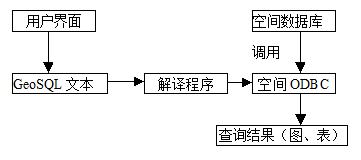Spatial Information Query
At present, the query function of most mature commercial GIS software can perfectly realize the simple search of spatial entity. For example, according to the spatial position indicated by the mouse, the system can find out the spatial entity and spatial range of the location (composed of several spatial entities) as well as their attributes, and display the list of attributes of the spatial object, and can carry out related work. Statistical analysis. The query can be divided into two steps: firstly, by means of spatial index, the selected spatial entity can be quickly retrieved in the spatial database. Secondly, according to the connection of spatial data and attribute data, the attribute list of the spatial entity can be obtained。
Attribute-based feature query
Generally speaking, the query operation based on attribute information is mainly completed in attribute database. At present, most GIS software stores attribute information in relational database, and the mature relational database provides us with a complete data index method and information query means. Almost all relational database management systems support standard structured query languages. Using SQL, we can easily realize the compound condition query of attribute information in the attribute database, screen out the identification value of the spatial entity that meets the condition, and then retrieve the spatial entity in the spatial database according to the identification value。
Queries Based on Spatial Relations and Attribute Characteristics (SQL)
There are many spatial relationships among spatial entities (including topology, order, measurement, etc.). In the actual application process, users often hope that GIS can provide some functions that can directly calculate spatial entity relations, such as users want to query cities that meet the following conditions:
‘A’ is in the east of a certain railway. B is not more than 30 kilometers away from the railway. C has a population of more than 700,000. D has a specific polygon. The whole query calculation involves spatial order relation (eastern part of railway), spatial distance relation (no more than 30 kilometers away from the railway), spatial topological relation (selected cities within a specific selection area), and attribute information query (urban population is more than 700,000)。
As far as the current mature geographic information system is concerned, it is difficult to complete the above query tasks systematically. For this reason, many geographic information system experts have proposed Spatial Query Language as a solution to the problem, but it is still in the stage of theoretical development and technological exploration。
GeoSQL: A Spatial Extended SQL Query Language
Query and retrieval is one of the most frequently used functions in Geographic Information System (GIS). Most of the problems raised by GIS users can be expressed as query form. That is, spatial query language can not only make GIS users access, query and process spatial data conveniently, but also realize the security and integrity control of spatial data. Compared with general SQL, spatial extended SQL mainly adds spatial data types and spatial operators to satisfy spatial feature queries. Spatial features include spatial attributes and non-spatial attributes, and spatial attributes are represented by specific “Location” fields. In addition to general integer, real and strings, spatial data types also have the following spatial data types: point type, arc type, unclosed line type, (Polygon) polygon type, image type and complex spatial feature type. The above types are for the Location field. Spatial operators in GeoSQL refer to functions with parameters. Usually it takes spatial features as parameters and returns spatial features or values. Space operators are mainly divided into two categories: one-dimensional space operators and two-dimensional space operators. Usually, the general form of standard SQL is: SELECT… FROM… WHERE, respectively, corresponds to relation operation projection, Cartesian product and selection, in which FROM statement represents the Cartesian product of the given relationship, that is, a single relationship is defined. Selection in WHERE statement and projection in SELECT statement all act on this relationship. Although GeoSQL belongs to the non-procedural text language, in order to make the operation simple and convenient, it can draw lessons from the characteristics of visual query language. Even if the user’s text input is minimized by using icons, listboxes and other components, it can also prevent grammatical errors caused by misunderstanding and semantic misunderstanding. The implementation of GeoSQL is shown in Figure 7-23。
